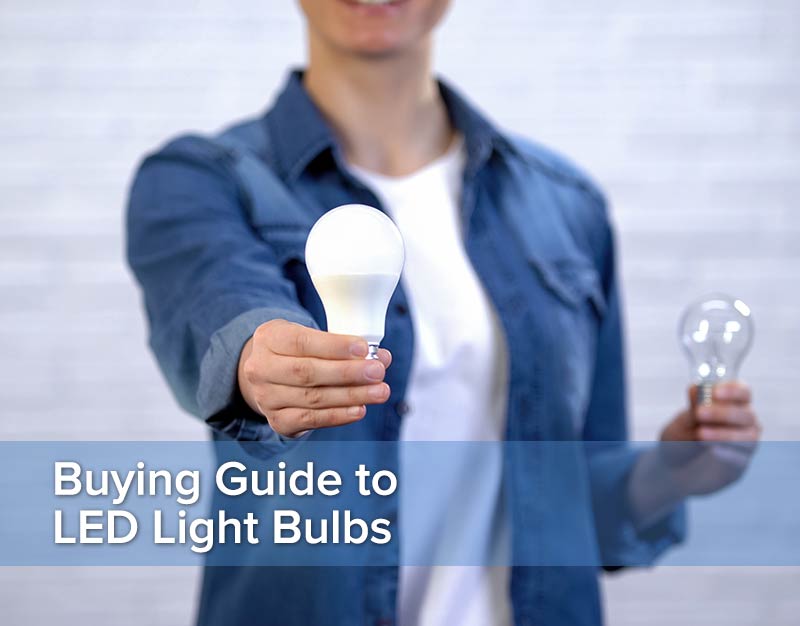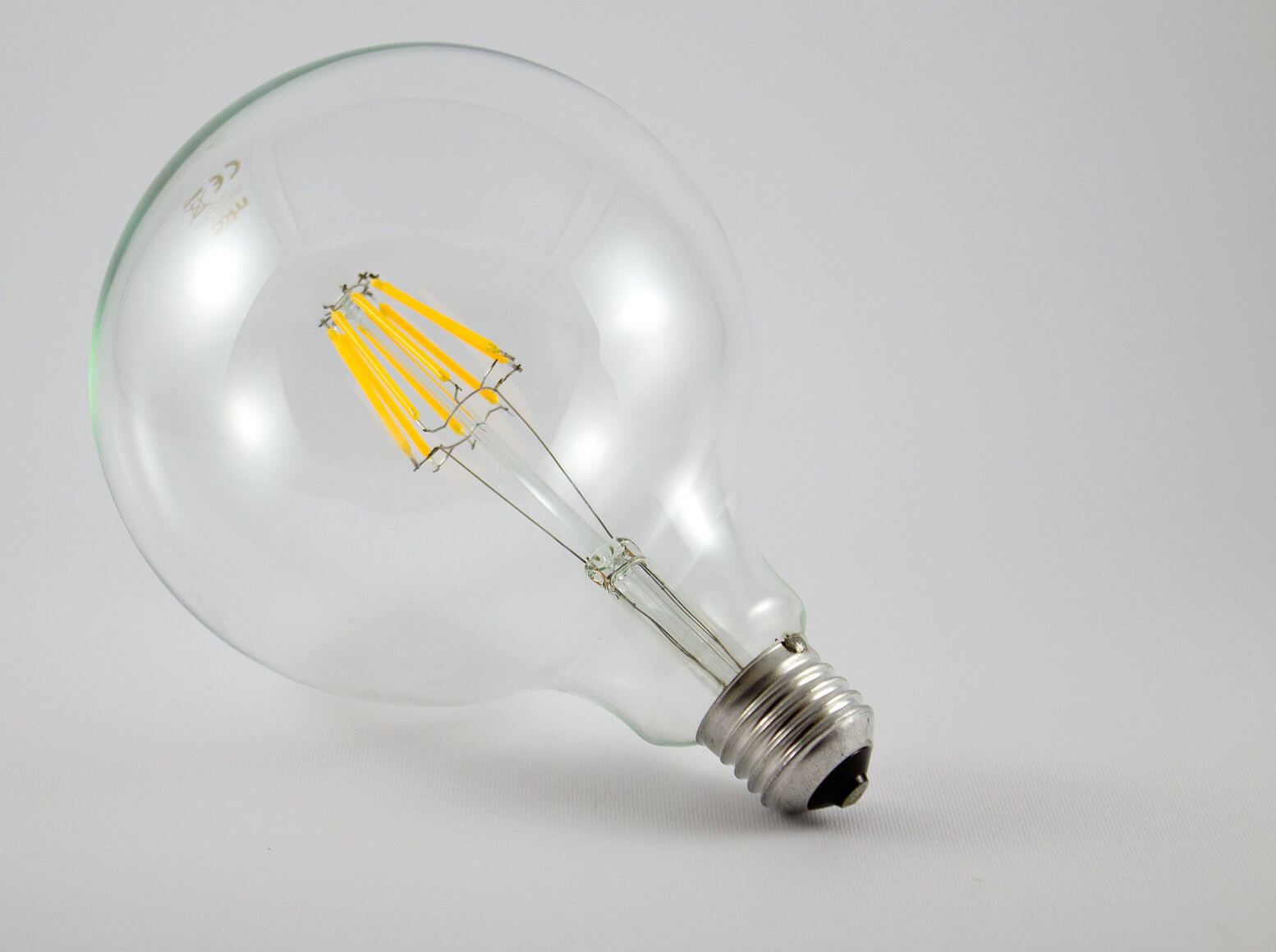
The wide variety of LED light bulbs can make choosing one seem a bit more complicated than it needs to be. We’re here to help. Our buyer’s guide to LED light bulbs tells you all you need to know to find the right LED bulbs for you.

Fitting/Cap
A light bulb’s fitting is obviously the most important aspect to get right. Fortunately, LED light bulbs are easy to shop in this respect, as they are built to retrofit to existing light fixtures. If you’re upgrading from incandescent bulbs to LEDs, you won’t need to change your lights fittings to accommodate the new bulbs, you just need to make sure you pick the correct cap type. See here for more help with cap types.

Efficiency
Comparing a light bulb’s lumens output to its wattage is the easiest way to determine how efficient it is. Lumens are a measure of how bright the light is, while its wattage denotes how much power it consumes.
The lower the wattage and the higher the lumens output, the more efficient the bulb. Typical LED light bulbs emit around 80-100 lumens per watt, while an incandescent bulb might only give you 40-50 lumens per watt.

Rated Life
One of the biggest advantages of LED light bulbs is their lifespan. They typically have an average rated life anywhere between 15,000 to 30,000 hours, and can even be as high as 50,000 hours. This is 10-20 times longer than an incandescent bulb, which only has a life of between 1,000 to 2,000 hours.
The long life of LED light bulbs can be a real advantage. Read our guide for more information about LED lifespans.

Colour Temperature
The colour temperature of a light bulb refers to the type of white light it emits. For example, a ‘warm’ white bulb would give off a softer, yellower light, suited to living rooms or bedrooms, while a ‘cool’ white bulb would give off a bluer, more intense light more suitable for kitchens and workspaces.
The colour temperature of a bulb is measured in Kelvins (K) and typically ranges in a scale from 2000K-6500K. The lower the number, the warmer the light that the bulb emits. Click here to read more.

Colour Rendering
The colour rendering index (CRI) of a bulb tells you how accurately that light reproduces natural colours. This isn’t something you need to look for in a bulb for everyday use, but it’s very important when the bulb is to be used for photographic or display uses, such as in retail displays or galleries. The CRI number ranges from 1-100, and the higher the number, the better the bulb renders colour. Anything over 90 is considered to be excellent.

Beam Angle
This only applies to directional bulbs, such as GU10s, and some downlights and wall-mounted fittings. The beam angle denotes the width of the beam of light that a bulb casts. The lower the beam angle, the narrower the light that it emits.
A beam angle of 20° would be very narrow, suitable for highlighting specific objects in a room, while a beam angle of 120° would cast a very wide light, perfect for corridors and larger areas.

Dimmable vs non-dimmable
Dimmable LED light bulbs are becoming more common, but before you buy, it’s worth checking the compatibility of a bulb if you’re planning to use it with an existing dimmer switch. The vast majority of dimmable LED light bulbs won’t work correctly if used without an LED-specific dimmer switch. They may still dim, but they might have a visible – and distracting – flicker.

 UK's #1 Specialist LED Retailer
UK's #1 Specialist LED Retailer
 Free Delivery Orders Over £50
Free Delivery Orders Over £50
 28 Day Returns Quality Guarantee
28 Day Returns Quality Guarantee